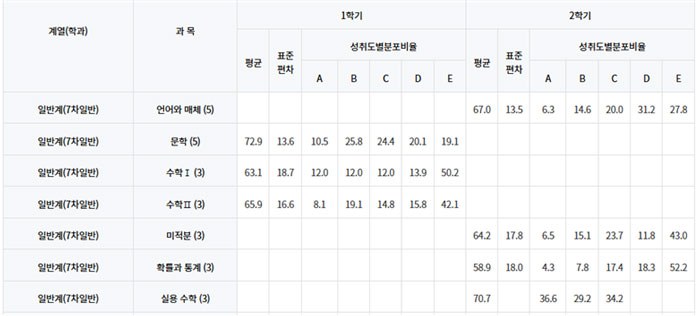National Association of Top Secondary School Teachers President Kwon Hyuk Sun
Why High School Credit System is Absolutely Necessary for Preventing Underachievers and Responsible Education
The biggest issue in the education field recently is "academic decline." This term goes beyond simply having low grades and carries concerns about the trust and functionality of public education being shaken. In particular, academic decline in mathematics is closely linked to the increase in "underachievers" (students who give up on math). The presence of many underachievers indicates that there are many students who cannot keep up with math classes, signaling a serious academic gap within the classroom.
According to the 2024 national academic achievement assessment results, the percentage of high school seniors lacking basic academic skills has increased in both Korean (8.6%) and math (16.6%). The situation is particularly severe in math. Various methods have been suggested to reduce this phenomenon, but there have not been clear results yet. So, what is the real solution needed?
The answer lies in the "organization of the curriculum." Depending on how and what subjects are taught, students' academic achievements can vary significantly.
Why is the math achievement in Jeonbuk low?

According to data released by Jongno Academy, the percentage of high school students in Jeonbuk achieving an A grade in math is only 7.7%, the lowest in the country. It is only half the national average of 16.5%. The reasons for such low achievement can be broadly analyzed in two ways.
One is the operation of the education system that obliges students to take all subjects with a high hierarchical status. The other is that this operational method, aligned with relative evaluation for college entrance and a test-oriented curriculum, imposes excessive burdens on students.
Case of School A: Rapid Pace, Many Underachievers

School A made both Math I and Math II mandatory, progressing quickly at a rate of 3 units per semester instead of the original 5 units. By reducing the subject from 5 units to 3 units, the pace was fast, and only some students who had prior learning led the class. The rest of the students either could not keep up with the class, becoming underachievers, or relied on private education.
Math I average: 65 points
A level (90 points or above): 12.0%
E level (60 points or below): 50.2%
Math II average: 64 points
A level: 8.1%
E level: 42.1%
The grades for probability and statistics in the second semester are even more severe. The average is 58.9 points, with A level at 4.3% and E level at 52.2%, meaning more than half lack basic skills.
This high academic gap occurred because students were forced to take high-status subjects even if their math skills were low, limiting their subject choices.
Internal Competition? Credit System and Absolute Evaluation as Solutions

Regarding this curriculum organization, teachers in the field express concerns that "if the number of students decreases, internal competition for college entrance could intensify." Therefore, math is designated as a compulsory subject, and all students are required to take the same subjects without choice. However, this method is a major cause of mass production of underachievers.
To solve this, a high school credit system focused on absolute evaluation and achievement assessment is necessary. The credit system ensures subject selection tailored to students' academic levels and career paths, allowing them to learn at their own pace without giving up on classes.
Case of School B: Ensuring Choice, Improving Achievement

School B scheduled only Math I in the first semester of the second year, with Math II in the second semester and probability and statistics in the third year. They also operated flexibly, allowing multiple selections for math projects and probability and statistics.
Math I average: 65.1 points
A level: 35.6%
E level: 13.1%
Math II average: 65.0 points
A level: 32.5%
E level: 17.3%
Probability and statistics were also divided into the second and third years. The same goes for math projects. As a result of considering the differences in learning levels by field, the average for math projects in the first semester was 92.4 points, and in the second semester, it was 84.9 points.
This curriculum respected students' choices and provided them with opportunities for learning tailored to their needs, effectively improving academic achievement. It allowed for creative exploration activities based on students' capabilities while reducing the burden of college entrance exams.
High school credit system is a necessity, not an option
To reduce the gap in math achievement and prevent underachievers, it is essential to allow students to choose subjects based on their levels and career paths. The only way to achieve this is through the high school credit system.
To realize responsible education and guarantee minimum achievement for underperforming students, student-centered curriculum should take precedence. Beyond simple grade distribution, the premise for in-depth exploratory learning and concept-centered learning lies in the organization of the curriculum.
To reduce underachievers and provide meaningful lessons to all students, the high school credit system must be properly implemented now.






